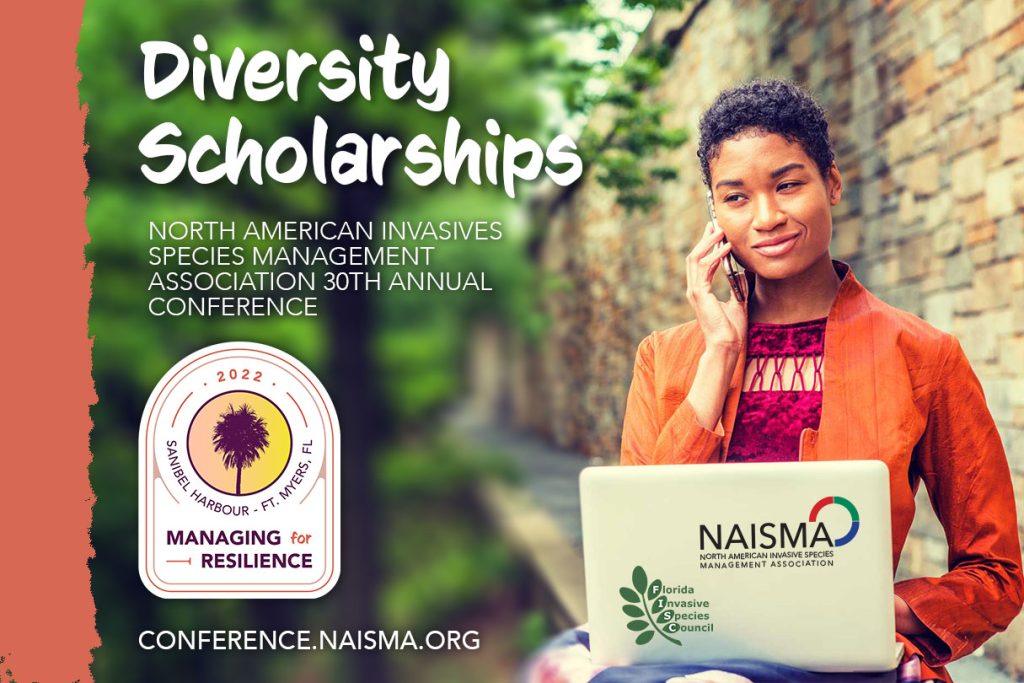Resources on Inclusion, Diversity, Equity, and Accessibility for Invasive Species Managers
Resources on Diversity and Inclusion
NAISMA supports a culture of inclusion through all of our programs, communications, and work to support invasive species managers.
- Read our Diversity and Inclusion Statement
- Learn about our Diversity and Equity Scholarships for our conference
- See the IDEA Committee calendar and learn how to get involved
Background Articles
Fourteen Recommendations to Create a More Inclusive Environment for LGBTQ+ Individuals in Academic Biology
Read on Life Sciences Education
Actionable recommendations to help biologists, biology educators, and biology education researchers be more inclusive of individuals with LGBTQ+ identities. These recommendations are intended to increase awareness of LGBTQ+ identities and spark conversations about transforming biology learning spaces and the broader academic biology community to become more inclusive of LGBTQ+ individuals.
How to be an active bystander when you see casual racism
Read on the New York Times
To avoid silent complicity, people can learn to become active bystanders: individuals who work to create cultures that actively reject harmful or discriminatory behavior through targeted interventions.
Communicating with the Public about Emerald Ash Borer: Militaristic and Fatalistic Framings in the News Media
Read on Sustainability
We recommend that public communications regarding invasive species be cautious about language evoking militarism and fatalism. Furthermore, invasive species communication requires a broader diversity and representation of voices because invasive species management requires community effort.
The War of the Roses: Demilitarizing Invasion Biology
Read on the Ecological Society of America
Biologists need to continuously reflect upon the ethical and rhetorical dimensions of their language when communicating about invasive species. In particular, is current language likely to promote social cohesion and, consequently, effective and appropriate action towards invasive species?
Anishnaabe Aki: an Indigenous Perspective on the Global Threat of Invasive Species
Read from Sustainability Science
Conservation discourses tend to portray invasive species as biological entities temporally connected to colonial timelines, using terms such as “alien”, “colonizing”, “colonial”, and “native”. This focus on a colonial timeline emerges from scientific publications within conservation biology and invasion ecology and is enacted through invasive species management by state and NGO actors. Colonialism is influential for indigenous nations in myriad ways, but in what ways do indigenous understandings of invasive species engage with colonialism?
Assessments
Use these resources for self-assessment of your own implicit biases.
Project Implicit
Project Implicit is a non-profit organization and international collaboration between researchers who are interested in implicit social cognition – thoughts and feelings outside of conscious awareness and control. The goal of the organization is to educate the public about hidden biases and to provide a “virtual laboratory” for collecting data on the Internet.
Action Continuum
There are many between supporting and confronting oppression. Where are you personally, and where is your organization? From the YWCA Unlearning Racism Tools for Action.
Ladder of Empowerment
Highlighting the impact of internalized racism on people of color while outlining an approach to empowerment.
Other Organizational Resources
Diverse Green 2.0
Green 2.0 is a 501(c)3 independent advocacy campaign to increase racial diversity among environmental organizations.
Unlearning Racism in Geoscience: URGE
URGE’s primary objectives are to (1) deepen the community’s knowledge of the effects of racism on the participation and retention of Black, Brown, and Indigenous people in Geoscience, (2) draw on existing literature, expert opinions, and personal experiences to develop anti-racist policies and strategies, and (3) share, discuss, and modify anti-racist policies and strategies within a dynamic community network and on a national stage. Includes multi-session curriculum and other resources.
Inclusion, Diversity, Equity and Accessibility Committee
In 2020 NAISMA formed a Inclusion, Diversity, Equity, and Accessibility (IDEA) Committee and created the organization’s first Diversity and Inclusion statement. The committee guides and contributes to the integration of opportunities to improve diversity and inclusion throughout programs, committee charters, and operations. A Diversity and Inclusion Scholarship to attend the Annual Conference was launched in 2020 and will continue in future conferences.
Committee Goals
- Improve student involvement by students in historically marginalized groups through scholarships.
- Ensure a diverse range of perspectives are present in developing conference programming.
- Engage and share resources with groups from underrepresented communities that share affinities for NAISMA’s invasive species work.
Committee Members
- Co-chairs: Kayla Malone and Deah Lieurance
- Members: Jennifer Andreas, Kelly Cooley, Nicole Kimmel, Kate Wilson, Cassidy Bender, Lesley Beckworth, Elizabeth Brown, Krista Lutzke, Belle Bergner
- NAISMA staff member: Tina Casagrand
To get involved with the IDEA committee please email tcasagrand[at]naisma.org. Thanks!


